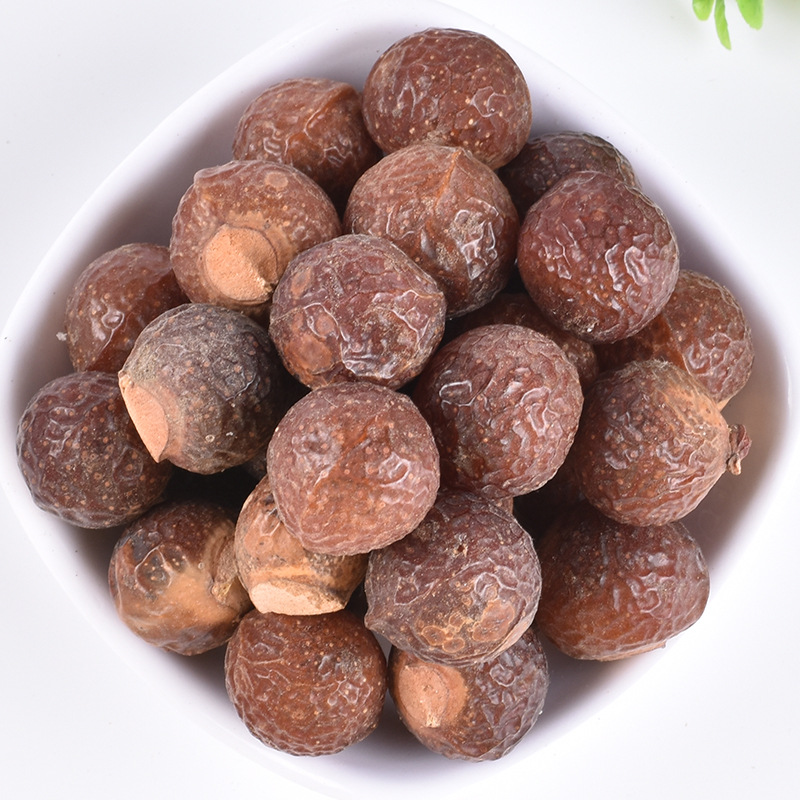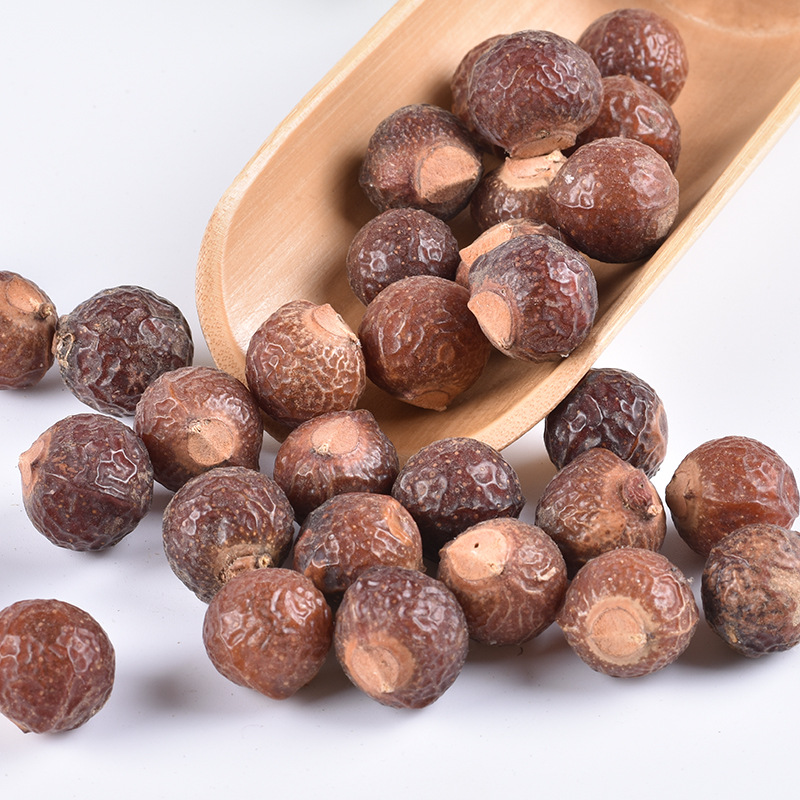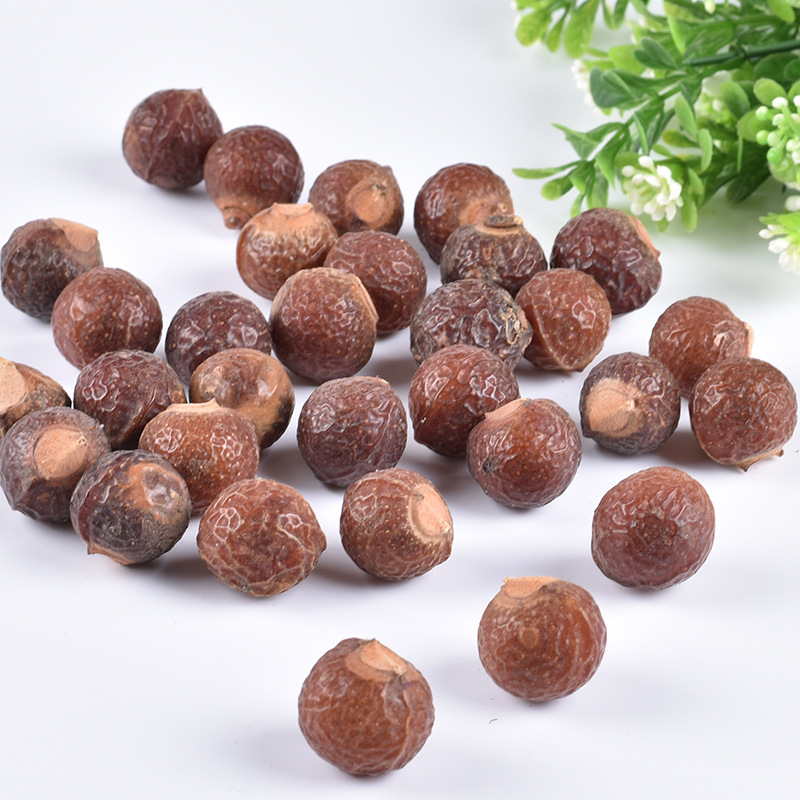
soapberry, also known as Soapnut or Chinese Soapberry, is a genus of about 14 species of deciduous trees and shrubs in the family Sapindaceae. The common name "Soapnut" comes from the fact that the fruit of the plant contains a high level of saponins, which are natural surfactants that create a lather with water, similar to soap.
The plant is native to warm temperate and tropical regions of the world, including Asia, Australia, and the Americas. It grows up to 10-20 meters (about 33-66 feet) tall and can thrive in a variety of soil types as long as there is good drainage. The leaves are pinnately compound, arranged alternately on the stem, and turn yellow before falling in autumn.
The fruit of the Sapindus tree is a brown, soft-shelled drupe that resembles a small berry. Inside the shell is a black, shiny seed surrounded by a fleshy, orange-brown pulp. This pulp is rich in saponins and has been traditionally used for making soap and shampoo due to its natural cleansing properties.
In traditional medicine, various parts of the Sapindus plant have been used for their medicinal benefits. For example, the fruit's extract is believed to have antimicrobial properties and has been used to treat skin infections and inflammations. Additionally, the plant's bark and leaves are sometimes used in herbal remedies for digestive issues and to promote wound healing.
Apart from its medicinal uses, the wood of the Sapindus tree is hard and durable, making it suitable for furniture and other wooden items. However, due to overexploitation for these purposes and habitat loss, some species within the genus are considered threatened.
Overall, the Sapindus plant is a versatile and valuable resource with a range of applications from household cleaning products to traditional medicine.








